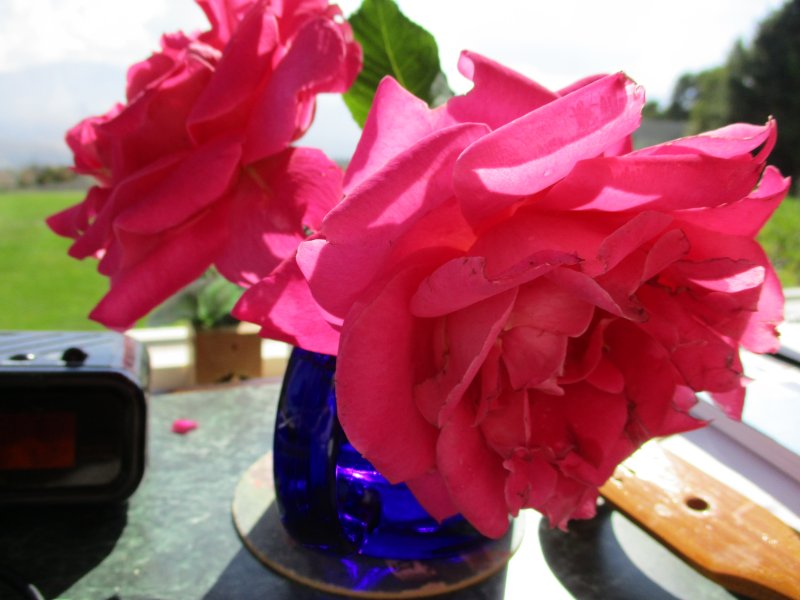
Set 3 of my Hydrangea Photographs
Bob Jensen at
Trinity University
These are two roses that Erika cut from her rose garden and put on my desk

This is one she left on a bush in the garden
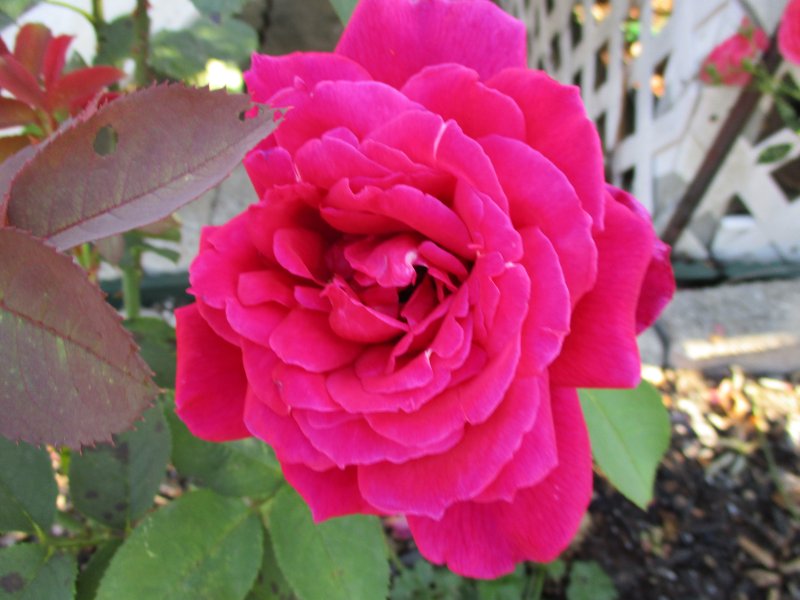
This is another one growing over my beloved New Guinea Impatiens
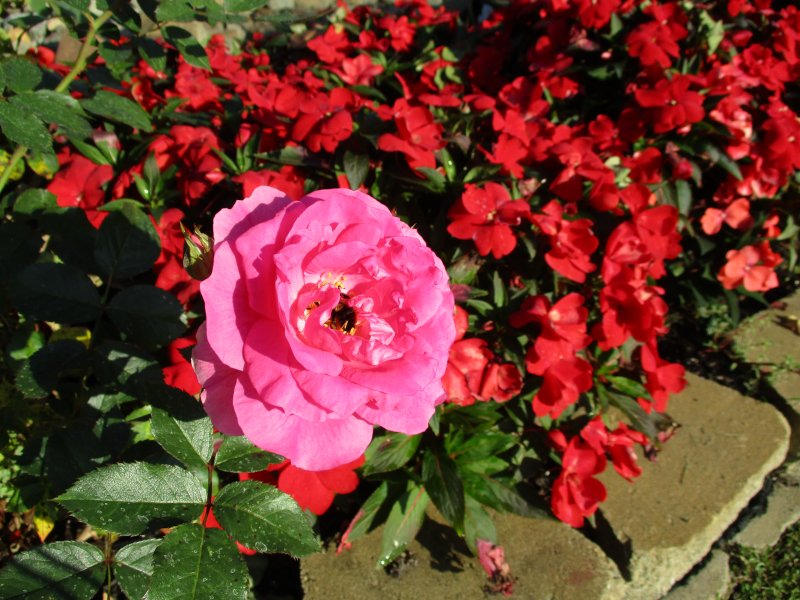
We are into the beginning of the
2017 foliage season, but the hydrangeas are still in bloom
Hydrangea blooms take on different colors as August follows July and again as
September follows August
The hydrangea tree in front of my desk is usually in full bloom by mid-July
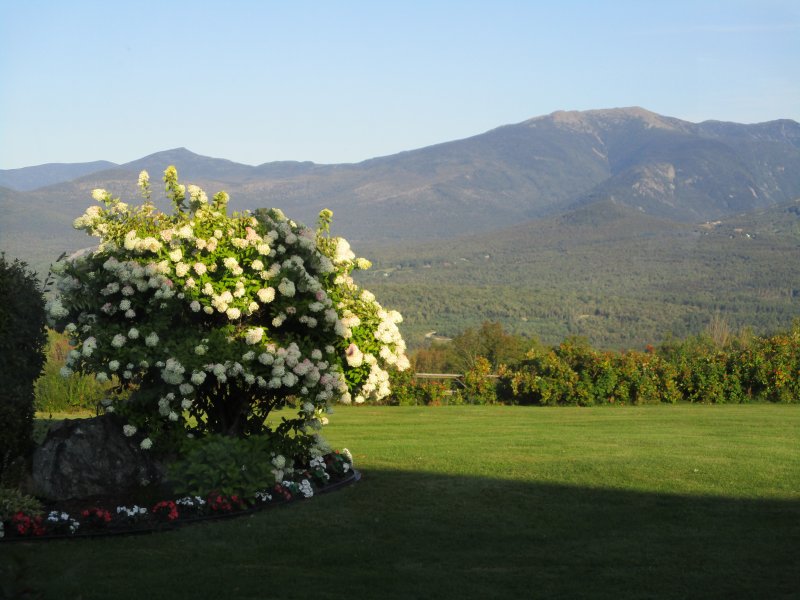
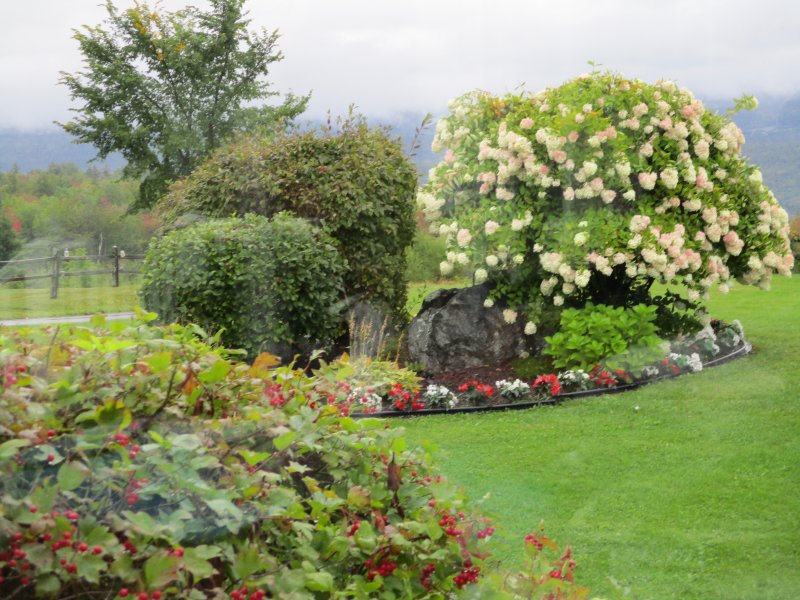
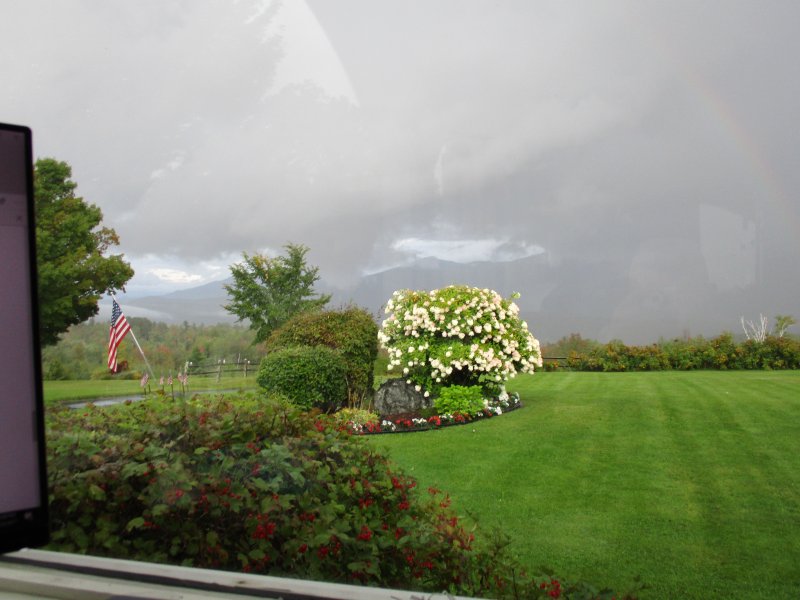
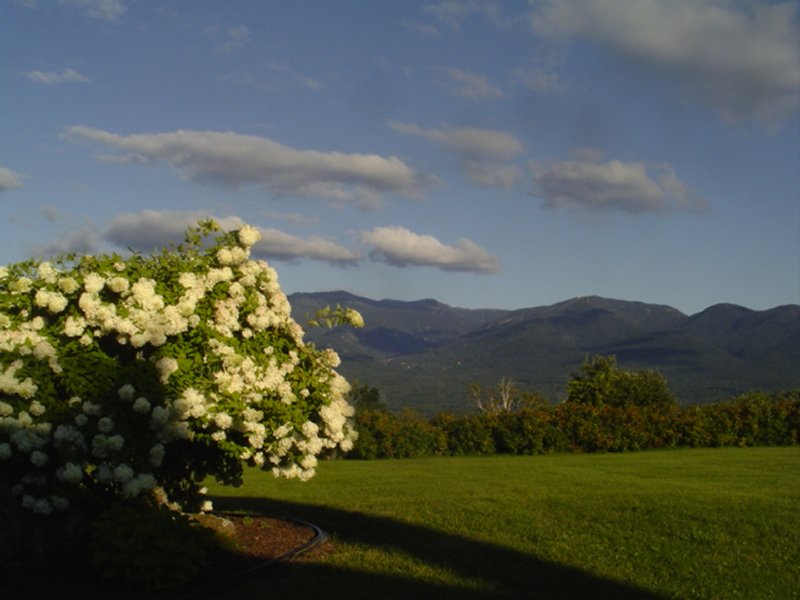
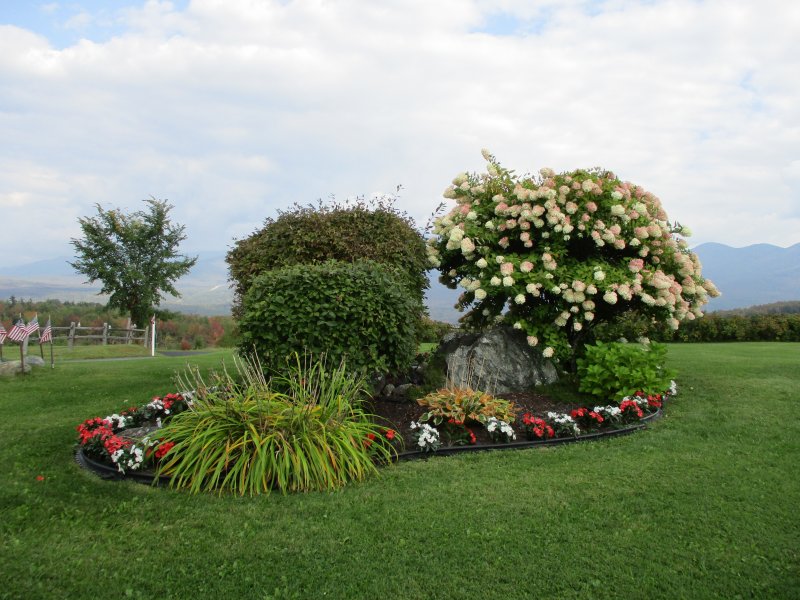
In late August or early
September the pure white blossoms become dirty pink
By early October the pink fades into brownish tones that steadily become more
brown
A few (certainly not all) of the brown blossoms cling to the tree throughout the
hard winds of winter
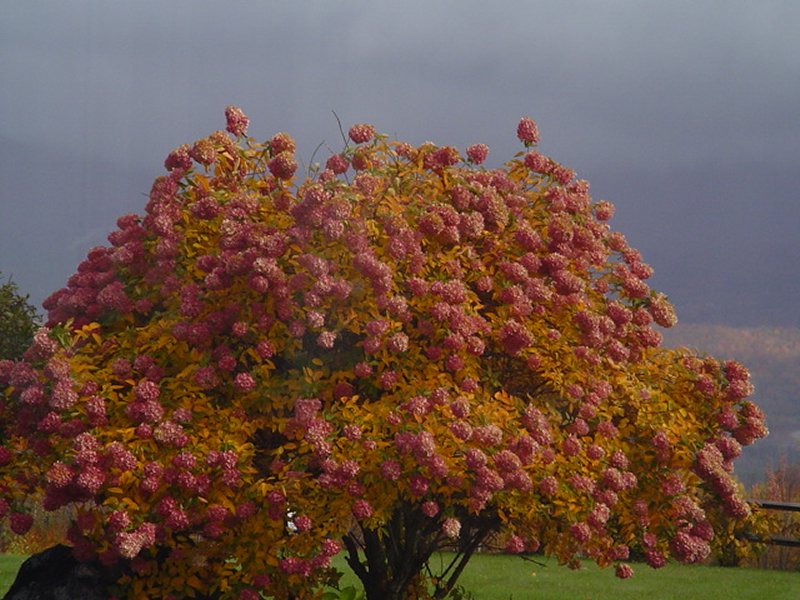
This is what the hydrangea blossoms looked like in early November 2016
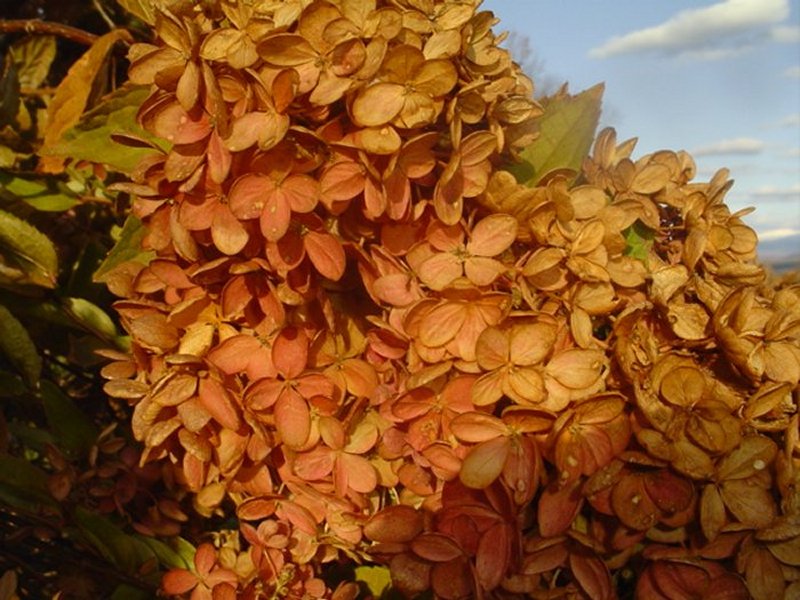
There are so many types on hydrangeas that we only have a few types
Different types bloom in different parts of the summer
The first hydrangeas on the scene in these mountains arrive in our back yard
just across the fence in June
They're bright orange beside my lawn tractor
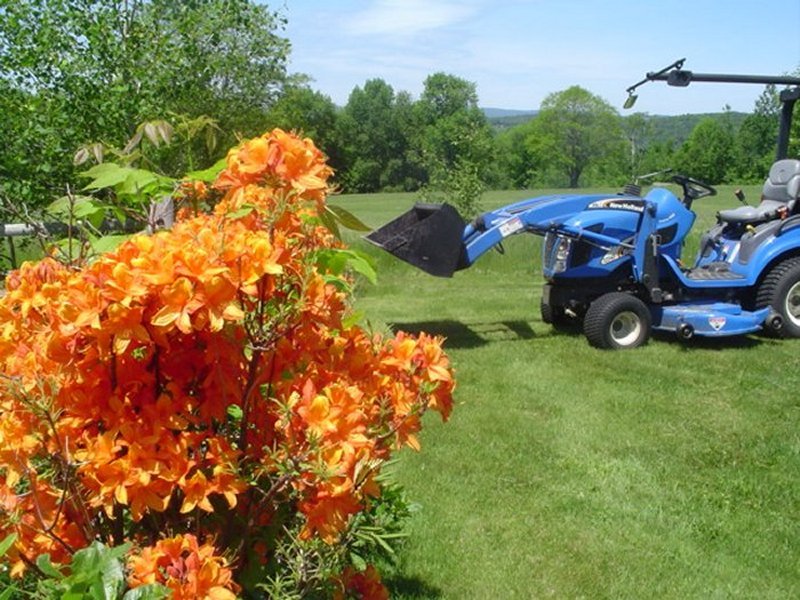
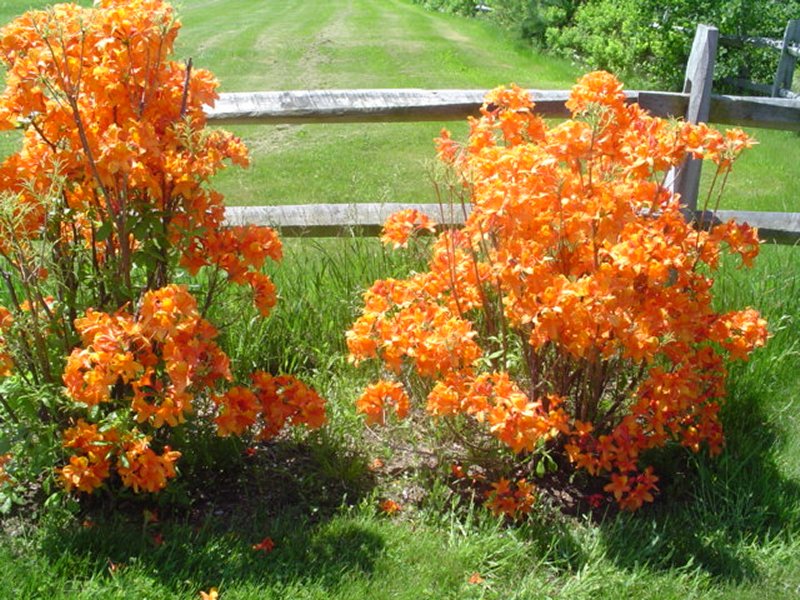
The orange and other brightly colored hydrangea
blooms up here drop off in early summer or mid-summer
The blooms lasting all summer arrive later in the season and are sometimes white
or greenish before turning white
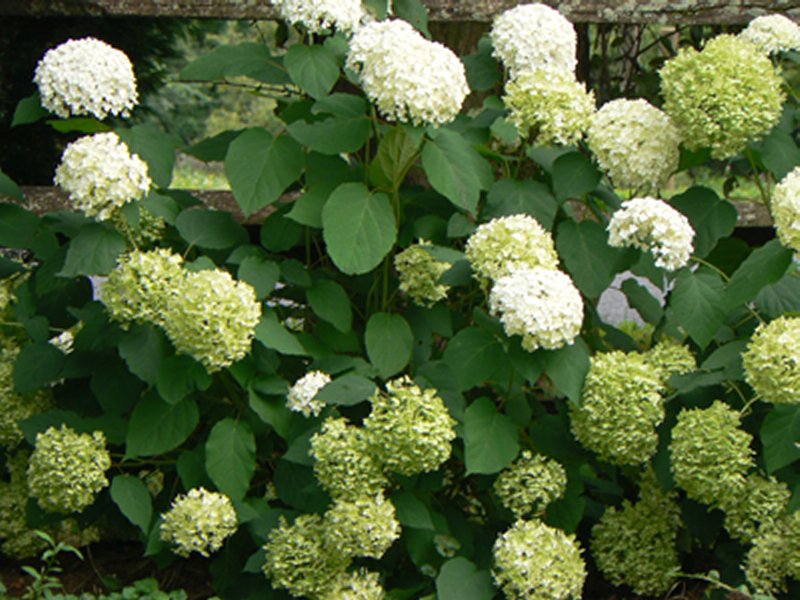
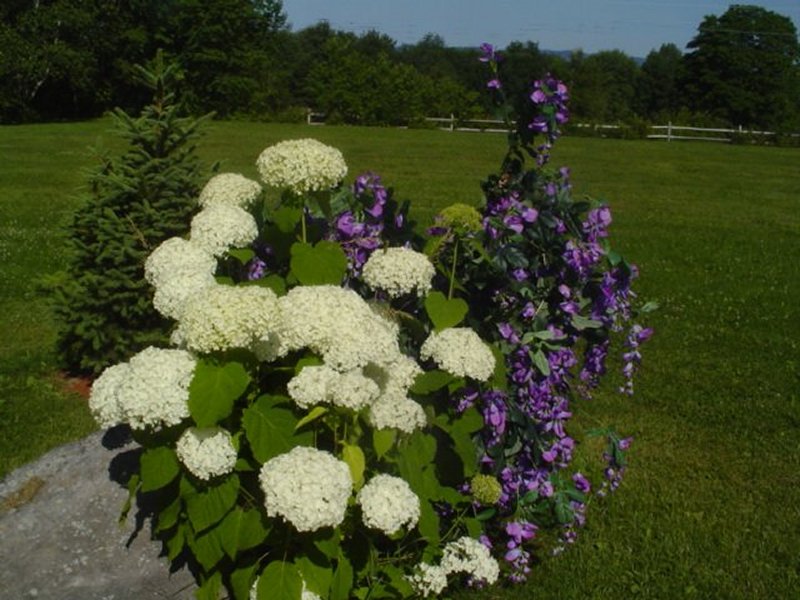
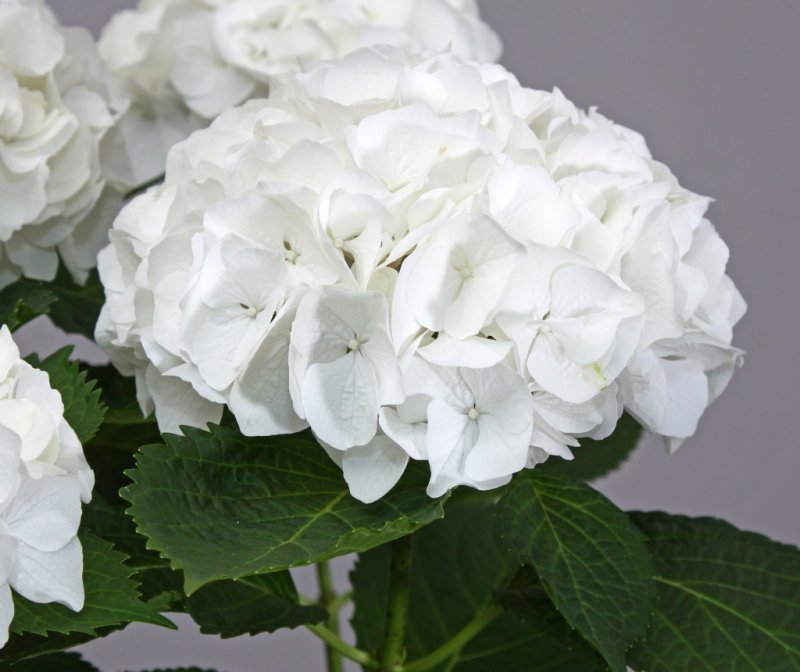
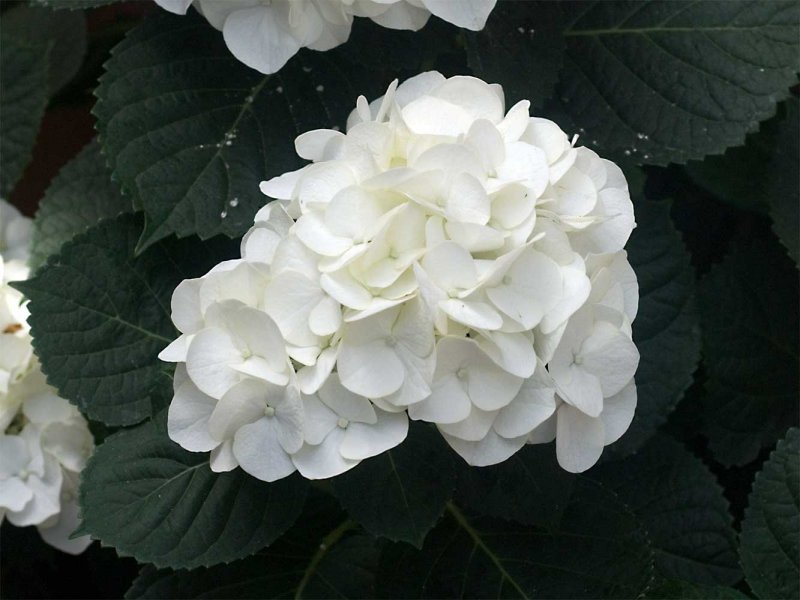
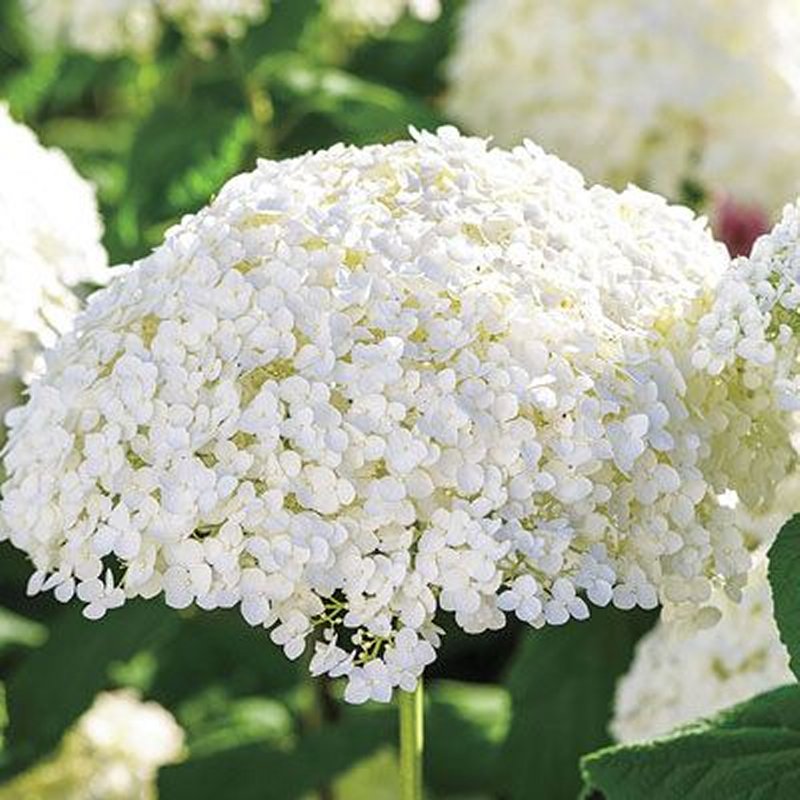
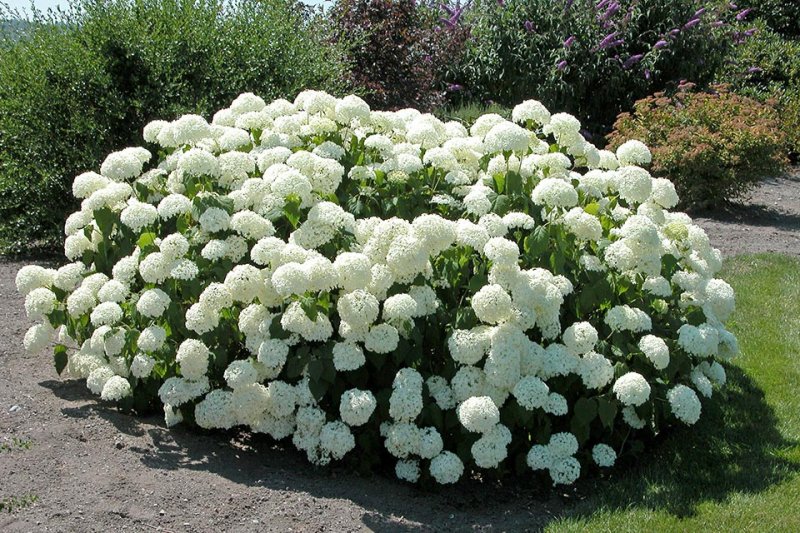
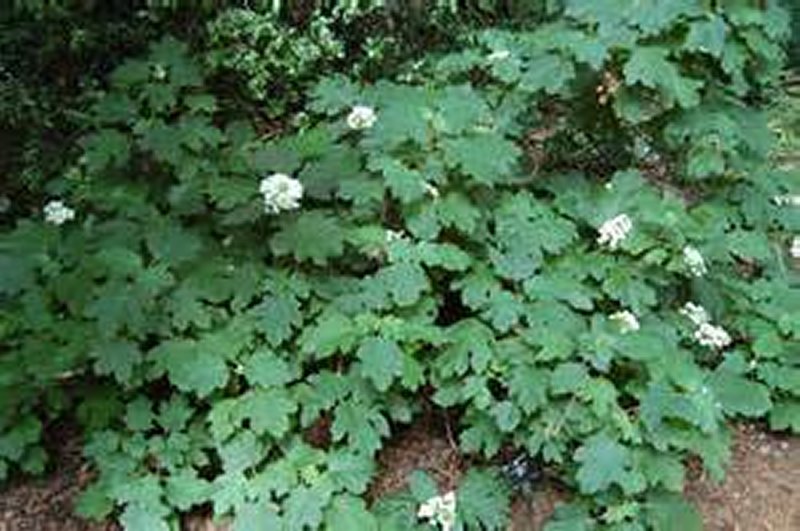
The blossoms below are not hydrangea blossoms
They are the blossoms of our pinkish polka weigela
in the pond garden
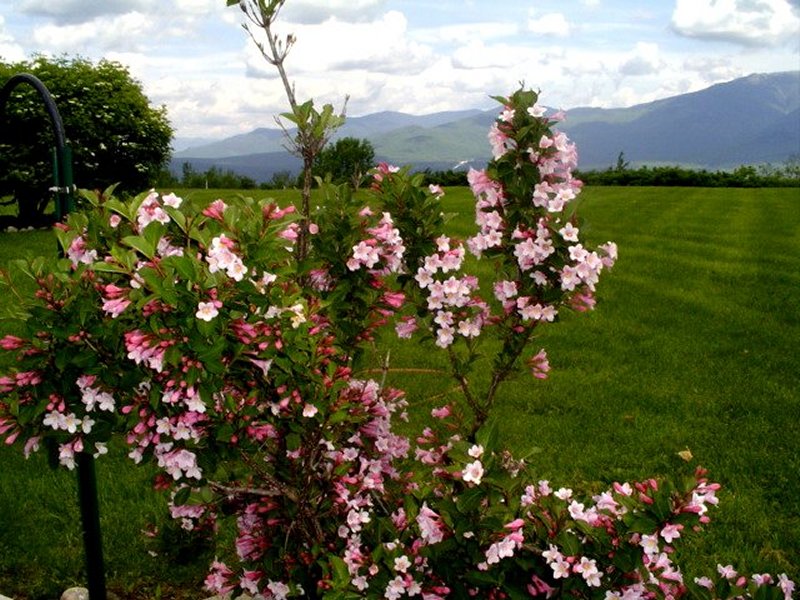
The smaller-blossomed hydrangea below is the butterfly bush alongside our small pond
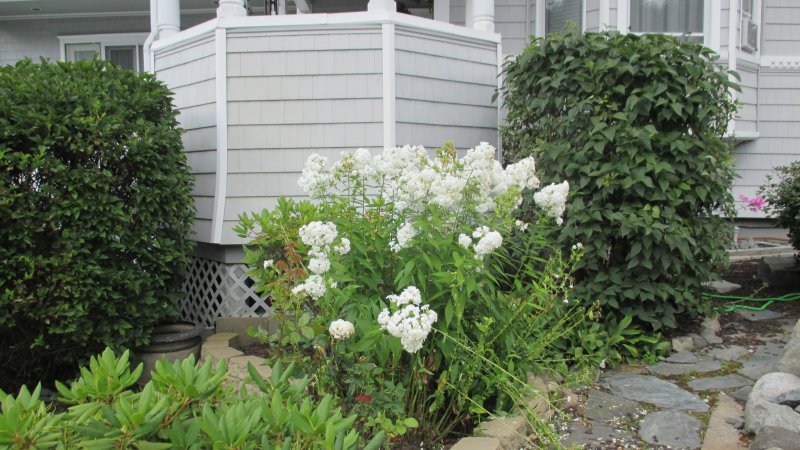
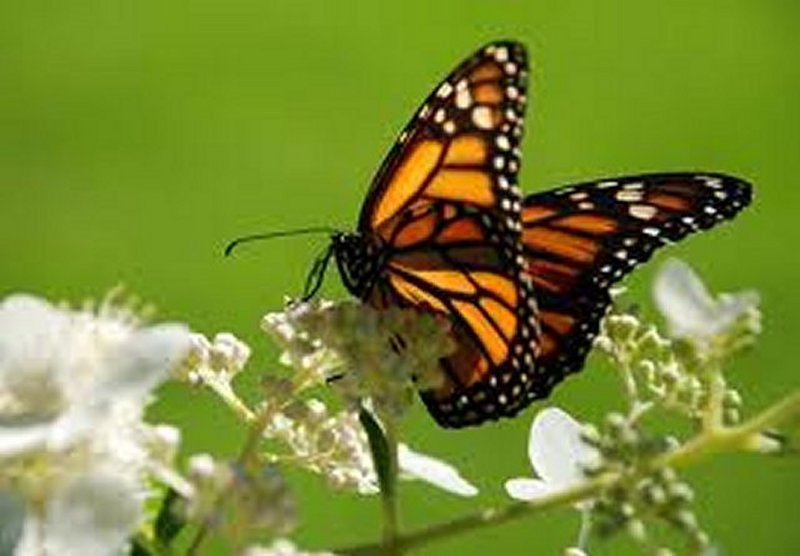
I will close this session with a shot of Erika's
summer roses
Roses like cool weather and will bloom late into October
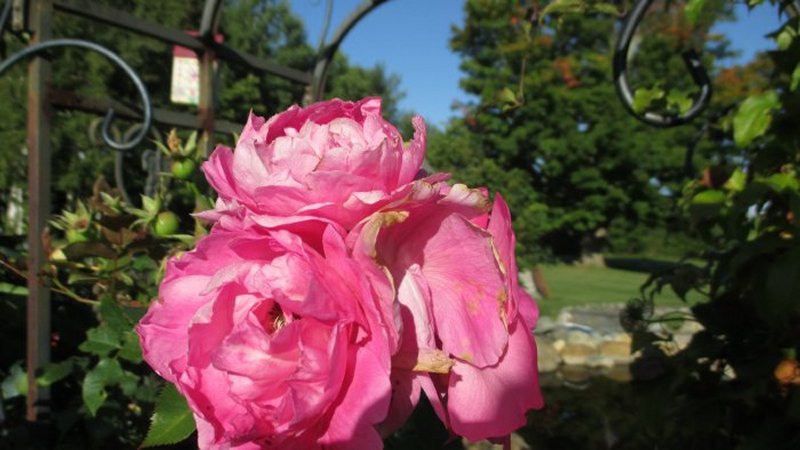
Set 01 of my Photographic
Special on Hydrangea, Buddleja and Polka
Weigela Life Cycles Near Our Cottage
http://www.cs.trinity.edu/rjensen/Tidbits/Hydrangeas/01/Hydrangeas01.htm
Set 2 of my
Hydrangea Photographs in Late Summer
http://www.cs.trinity.edu/rjensen/Tidbits/Hydrangeas/02/Hydrangeas02.htm
Hydrangea --- http://en.wikipedia.org/wiki/Hydrangea
Hydrangea common names Hydrangea and Hortensia) is a genus of about 70 to 75 species of flowering plants native to southern and eastern Asia (China, Japan, Korea, the Himalayas, and Indonesia) and North and South America. By far the greatest species diversity is in eastern Asia, notably China, Japan, and Korea. Most are shrubs 1 to 3 meters tall, but some are small trees, and others lianas reaching up to 30 meters by climbing up trees. They can be either deciduous or evergreen, though the widely cultivated temperate species are all deciduous.
Having been introduced to the Azores Islands of Portugal, they are now very common there, particularly on Faial, which is known as the "blue island" due to the vast number of hydrangeas present on the island, Terceira, named the "lilac island" for hydrangeas of that colour, on Flores Island ("Island of Flowers") and São Miguel, named the "green island" for its floral biodiversity.
Species in the related genus Schizophragma, also in Hydrangeaceae, are also often known as hydrangeas. Schizophragma hydrangeoides and Hydrangea petiolaris are both commonly known as climbing hydrangeas.
There are two flower arrangements in hydrangeas. Mophead flowers are large round flowerheads resembling pom-poms or, as the name implies, the head of a mop. In contrast, lacecap flowers bear round, flat flowerheads with a center core of subdued, fertile flowers surrounded by outer rings of showy, sterile flowers. The flowers of some rhododendrons can appear similar to those of some hydrangeas, but Rhododendron (including azalea) is in a different order.
Colors and soil acidity
Hydrangea flowers are produced from early spring to late autumn; they grow in flowerheads (corymbs or panicles) at the ends of the stems. In many species, the flowerheads contain two types of flowers, small fertile flowers in the middle of the flowerhead, and large, sterile bract-like flowers in a ring around the edge of each flowerhead. Other species have all the flowers sterile and of the same size.
Colors and soil acidity
In most species the flowers are white, but in some species (notably H. macrophylla), can be blue, red, pink, light purple, or dark purple. In these species the color is affected by the pH of the soil; acidic which can be taken up into hyperaccumulating plants.[For H. macrophylla and H. serrata cultivars, the flower color can be determined by the relative acidity of the soil: an acidic soil (pH below 6) will usually produce flower color closer to blue, whereas an alkaline soil (pH above 6) will produce flowers more pink.
Butterfly Bush --- http://en.wikipedia.org/wiki/Buddleja
Buddleja, or Buddleia commonly known as the butterfly bush,[4] is a genus of flowering plants. The generic name bestowed by Linnaeus posthumously honoured the Reverend Adam Buddle (1662–1715), a botanist and rector in Essex, England, at the suggestion of Dr. William Houstoun. Houstoun sent the first plants to become known to science as buddleja (B. americana) to England from the Caribbean about 15 years after Buddle's death.
More of Bob Jensen's Pictures and
Stories
http://www.trinity.edu/rjensen/Pictures.htm
The Inn on Sunset Hill (just down from our cottage) ---
https://www.youtube.com/watch?v=A5cqUX0LcbU&t=9s
On May 14,
2006 I retired from
Trinity University after a long and
wonderful career as an accounting professor in four universities. I was
generously granted "Emeritus" status by the Trustees of Trinity University. My
wife and I now live in a cottage in the White Mountains of New Hampshire ---
http://www.trinity.edu/rjensen/NHcottage/NHcottage.htm
Bob
Jensen's Blogs ---
http://www.trinity.edu/rjensen/JensenBlogs.htm
Current and past editions of my newsletter called New
Bookmarks ---
http://www.trinity.edu/rjensen/bookurl.htm
Current and past editions of my newsletter called
Tidbits ---
http://www.trinity.edu/rjensen/TidbitsDirectory.htm
Current and past editions of my newsletter called
Fraud Updates ---
http://www.trinity.edu/rjensen/FraudUpdates.htm
Bob Jensen's past presentations and lectures
---
http://www.trinity.edu/rjensen/resume.htm#Presentations
Our
address is 190 Sunset Hill Road, Sugar Hill, New Hampshire
Our cottage was known as the Brayton Cottage in the early 1900s
Sunset Hill is a ridge overlooking with
New Hampshire's White Mountains to the East
and Vermont's
Green Mountains to the West
Bob Jensen's Threads --- http://www.trinity.edu/rjensen/threads.htm
Bob Jensen's Home Page --- http://www.trinity.edu/rjensen/